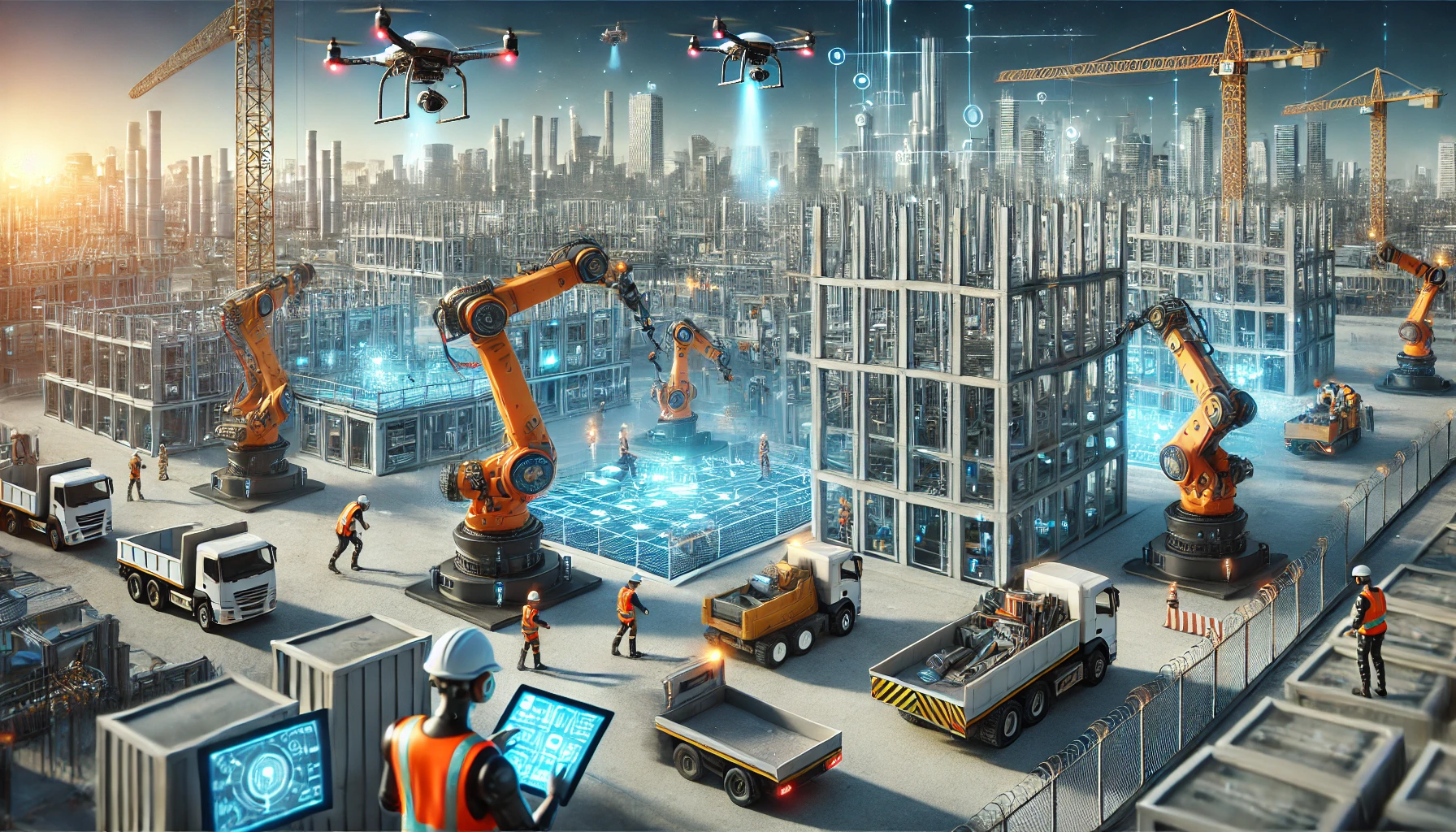The construction industry is undergoing a technological transformation, and robotics is playing a key role in making projects faster, safer, and more efficient. From automated bricklaying to 3D printing and robotic arms, construction robots are revolutionizing the way buildings and infrastructure are developed.
But how exactly are robots improving industrialized construction? Let’s explore their applications, benefits, challenges, and impact on the future of the industry.
How Robotics is Transforming Construction
Robots in construction help with precision tasks, repetitive labor, and hazardous work. They are primarily used for:
- Prefabrication and modular assembly
- Automated bricklaying and concrete pouring
- 3D printing of structures
- Site surveying and drone inspections
- Material transportation and logistics
These technologies improve productivity, safety, and quality control, making industrialized construction even more efficient.
Types of Robots Used in Industrialized Construction
1. Robotic Arms for Prefabrication
Robotic arms are widely used in factory-based construction, where they:
- Assemble prefabricated building components
- Weld steel frames and cut materials with precision
- Place insulation, install drywall, and add finishes
🔹 Impact: Increases speed and accuracy while reducing labor costs.
2. Automated Bricklaying Robots
Bricklaying robots like SAM100 (Semi-Automated Mason) can lay bricks six times faster than human workers. They:
- Place bricks with high precision
- Apply mortar automatically
- Work continuously, reducing construction time
🔹 Impact: Speeds up masonry work while ensuring consistency and quality.
3. 3D Printing Robots
Construction 3D printers use robotic arms to print entire walls and buildings layer by layer. They:
- Use concrete, plastic, or sustainable materials
- Reduce waste by using exact material amounts
- Create complex architectural designs with ease
🔹 Impact: Cuts construction costs by up to 50% and reduces waste.
4. Drones for Site Inspection
Drones are used to survey construction sites, monitor progress, and detect issues. They:
- Map large areas quickly with aerial imagery
- Inspect structures for safety risks
- Provide real-time data to engineers
🔹 Impact: Improves efficiency and safety on construction sites.
5. Autonomous Vehicles and Robotic Excavators
Self-operating machines help with:
- Excavation and earthmoving
- Transporting heavy materials
- Paving roads and laying foundations
🔹 Impact: Reduces manual labor requirements and increases work efficiency.
Benefits of Robotics in Industrialized Construction
✅ Faster Project Completion: Robots can work 24/7, reducing construction time.
✅ Higher Precision and Quality: Reduces human errors and defects in assembly.
✅ Improved Safety: Robots perform dangerous tasks, reducing workplace injuries.
✅ Cost Savings: Fewer labor costs and material waste, leading to better financial efficiency.
Challenges of Implementing Robotics in Construction
1. High Initial Investment
- Robots require significant upfront costs, but provide long-term savings.
2. Need for Skilled Workers
- Engineers and workers need specialized training to operate and maintain robots.
3. Integration with Existing Methods
- Some traditional construction processes may need adjustments to fully adopt robotics.
The Future of Robotics in Construction
🔹 AI and Robotics Integration: Machines will learn to adapt and improve over time.
🔹 Fully Automated Construction Sites: Robots will handle all aspects of building assembly.
🔹 Sustainable Construction with Robotics: Eco-friendly materials and automated processes will reduce carbon footprints.
As robotics continues to evolve, industrialized construction will become faster, safer, and more cost-effective.
Would you trust robots to build your next project? The future of construction is here!

